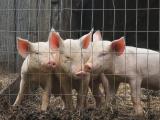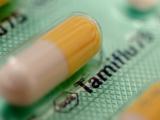May 27, 2009 (CIDRAP News) – Sanofi Pasteur announced today that it has received a novel H1N1 influenza vaccine virus from the Centers for Disease Control and Prevention (CDC), moving the company a step closer to starting production of a vaccine.
CDC spokesman Tom Skinner said this afternoon that the agency is also sending the vaccine virus to other manufacturers, located overseas, who should receive the samples within a few days.
Jeff McLaughlin, a spokesman for vaccine maker GlaxoSmithKline (GSK), said today he couldn't confirm GSK's receipt of the vaccine strain, but added, "We understand that the CDC is in the process of shipping the strain to all the relevant manufacturers."
CDC and World Health Organization (WHO) officials had predicted that the CDC would release H1N1 vaccine viruses to manufacturers by the end of May. WHO officials have said that production of H1N1 vaccines is most likely to begin in July.
The preparation of a vaccine strain involves combining a clinical sample of the target virus with another influenza virus that grows in eggs. This process creates a new virus that has some of the properties of the target virus and the ability to grow in eggs, the US Department of Health and Human Services noted today in a fact sheet on vaccine development activities. Most flu vaccines are still produced by growing them in eggs.
Wayne Pisano, president of Sanofi Pasteur, said in a news release, "As a company committed to protecting human health, Sanofi Pasteur looks forward to quickly understanding how this virus performs in a vaccine manufacturing environment and developing a working seed that will enable large-scale production."
Sanofi will now begin "passaging" the virus, referring to "the process for acclimating virus to grow in a production environment at optimum yield," the company said. The process will take about 2 weeks.
"Following quality controls, Sanofi Pasteur will be prepared to begin industrial production as soon as directed by public health agencies," the statement added.
Health officials have estimated it would take manufacturers 4 to 6 months from when they receive the vaccine strain to start producing a vaccine in quantity. But a Sanofi spokeswoman said last week that the company may be able to start producing its first doses in 3 to 4 months.
Sanofi and GSK both announced within the past few days that they had received US government orders for novel H1N1 vaccines.
In related news, the WHO has recommended that vaccines for the novel H1N1 influenza virus be based on an isolate from California, saying most H1N1 viruses isolated so far are very similar to it.
A majority of the novel H1N1 viruses isolated so far are antigenically and genetically related to the isolate known as A/California/7/2009 (H1N1), the WHO said in a statement posted online yesterday.
The WHO said that its collaborating laboratories, certain regulatory agency laboratories, and other partners are developing reassortant viruses antigenically similar to the California strain for use in vaccines.
Skinner, of the CDC, said the agency used the California strain in making the vaccine virus now being released to manufacturers.
WHO spokesman Gregory Hartl said several other WHO collaborating centers and regulatory laboratories are developing novel H1N1 vaccine viruses. He said they include St. Jude Children's Research Hospital in Memphis, a US Food and Drug Administration lab, and facilities in Japan, the United Kingdom, and Australia.
See also:
May 27 Sanofi press release
May 26 CIDRAP News story "Companies receive HHS orders for novel flu vaccine"



















